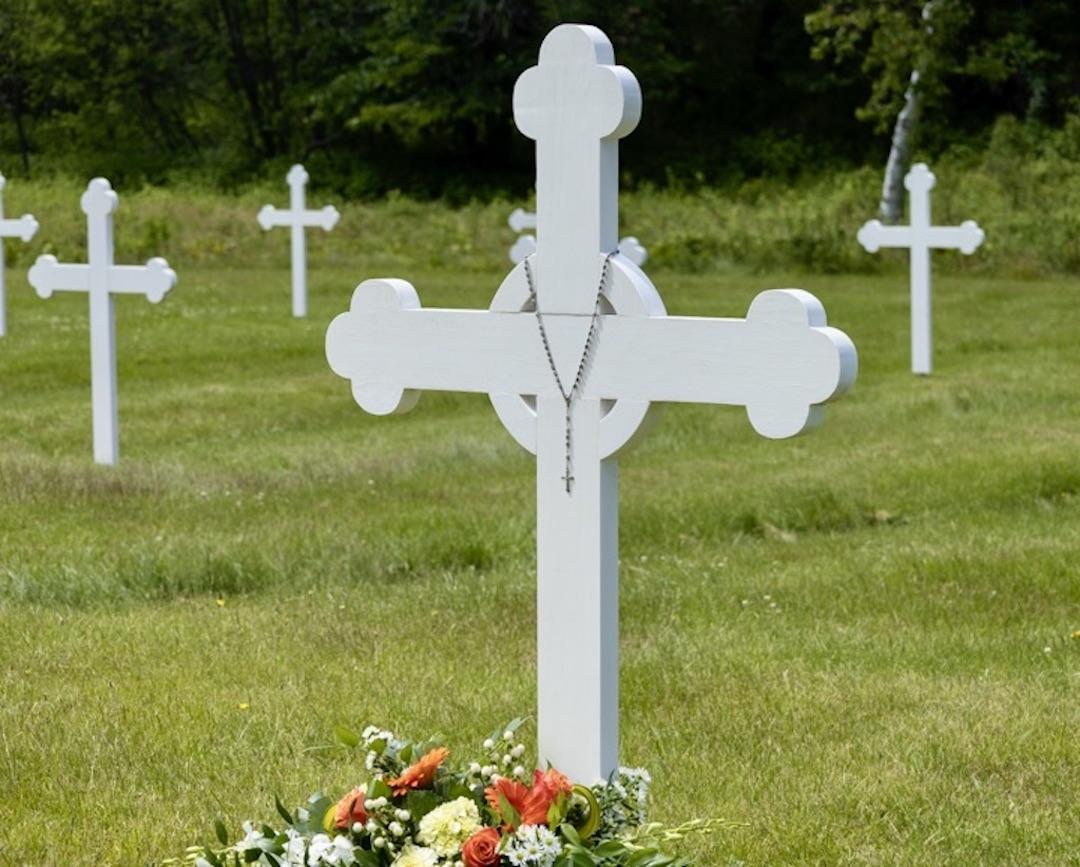
In Quebec, the Gross Île and the Irish Memorial National Historic Site has marked its 175th anniversary/Parks Canada
Forty-seven new Celtic crosses have been erected to mark the 175th anniversary of the Irish tragedy of 1847 at Grosse Île and the Irish Memorial National Historic Site in Quebec.
Fleeing famine, more than 100,000 people left Ireland in 1847 in boats that weren’t suitable for transporting passengers and arrived at the Grosse Île quarantine station weakened by malnutrition, starvation and typhus. The facilities, which had seen just 25,000 to 30,000 immigrants the previous year, struggled to meet demand. The grim toll included 5,000 deaths at sea, 5,424 burials on Grosse Île and thousands of deaths in various Canadian cities.
The July 6 ceremony honored the victims' memory and applauded the courage and perseverance of the island staff who assisted the sick. It highlighted the social and cultural legacy of the Irish in Canadian society today.
It took place near the Irish cemetery, where 47 new Celtic crosses were erected, replacing those installed in the 1960s. Dignitaries laid wreaths at the foot of the crosses to pay their respects to those who perished in the tragedy. Flowers were also laid at the foot of the doctors' monument to recognize the contributions and sacrifices of the quarantine station staff.

People attended a July 6 ceremony at Grosse Ile to mark its 175th anniversary/Parks Canada
“Grosse Ile represents the triumph of Canadian compassion over the callous indifference of colonial rule in Ireland,” Eamonn McKee, ambassador of Ireland, said in a news release. “The numbers of desperate Irish refugees fleeing starvation at home often outnumbered the resident populations along the St. Lawrence River. Yet whether doomed to die or restored to health, the desperate Irish refugees from the Great Famine at home found here care and respect. They learned they had a home here in Canada. Canadians learned the value of self-government over the perils of colonial rule. On this hallowed ground, we remember these truths.”
The Great Irish Famine is considered one of the most important chapters in Irish history — a pivotal and traumatic time. Grosse Île is now considered — both in Ireland and in the Irish diaspora — as the sacred ground on which stands the 15-metre (50-foot) high Celtic Cross monument. Built in 1909 under the auspices of the Ancient Order of Hibernians, this trilingual (French, English and Gaelic) Celtic-style cross with a circle intersecting the four arms was cut from Irish stone.
The seasonal site is open until Oct. 10.

 Support Essential Coverage of Essential Places
Support Essential Coverage of Essential Places




Add comment